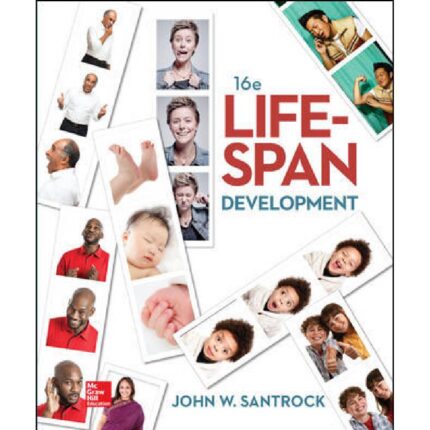Chapter 11
Moral Development and Aggression
MULTIPLE CHOICE
11-1. What is the term that refers to the changes in people’s sense of justice and of what is right and wrong, and in their behavior related to moral issues?
a) law and order
b) imminent justice
c) moral development
d) heteronomous morality
Answer: C
Difficulty: Easy
Page: 324
Skill: Factual
LO 11.1: Compare and contrast the various approaches to moral development.
Bloom’s Taxonomy Level: Remember
11-2. What is the term that describes helping behavior that benefits others?
a) immanent justice
b) moral development
c) autonomous cooperation
d) prosocial behavior
Answer: D
Difficulty: Medium
Page: 324
Skill: Factual
LO 11.1: Compare and contrast the various approaches to moral development.
Bloom’s Taxonomy Level: Remember
11-3. Clarice is a 5-year-old who is watching a movie and eating popcorn with her 3-year-old brother. Clarice’s brother finishes his popcorn long before Clarice, so she offers her brother some of her popcorn. Clarice’s mother praises her as a “good girl” for sharing. This is an example of
a) Piaget’s autonomous cooperation.
b) Piaget’s incipient cooperation.
c) prosocial behavior of the social learning theory.
d) modeling.
Answer: C
Difficulty: Easy
Page: 324
Skill: Applied
LO 11.1: Compare and contrast the various approaches to moral development.
Bloom’s Taxonomy Level: Apply
11-4. Prosocial behavior that is learned indirectly by observing the behavior of others is called
a) moral development.
b) modeling.
c) empathy.
d) social learning.
Answer: B
Difficulty: Medium
Page: 325
Skill: Conceptual
LO 11.1: Compare and contrast the various approaches to moral development.
Bloom’s Taxonomy Level: Understand
11-5. According to the social learning theory, modeling paves the way for the development of more general rules and principles in a process called
a) empathy.
b) abstract modeling.
c) immanent justice.
d) autonomous cooperation.
Answer: B
Difficulty: Difficult
Page: 325
Skill: Factual
LO 11.1: Compare and contrast the various approaches to moral development.
Bloom’s Taxonomy Level: Remember
11-6. According to developmentalists, what lies at the heart of moral behavior?
a) cognitive ability
b) empathy
c) social skills development
d) Freud’s “superego”
Answer: B
Difficulty: Difficult
Page: 326
Skill: Conceptual
LO 11.1: Compare and contrast the various approaches to moral development.
Bloom’s Taxonomy Level: Understand
11-7. Which of the following psychologists contends that people pass through a series of stages as their sense of justice evolves and in the kind of reasoning they use to make moral judgments?
a) Freud
b) Erikson
c) Kohlberg
d) Bandura
Answer: C
Difficulty: Difficult
Page: 326
Skill: Factual
LO 11.2: Summarize Kohlberg’s and Gilligan’s theories of moral development, and explain how they differ.
Bloom’s Taxonomy Level: Remember
11-8. According to psychologist Lawrence Kohlberg, which of the following stages reflects concrete interests of the individual considered in terms of rewards and punishments?
a) conventional morality
b) postconventional morality
c) moral reasoning
d) preconventional morality
Answer: D
Difficulty: Medium
Page: 327
Skill: Conceptual
LO 11.2: Summarize Kohlberg’s and Gilligan’s theories of moral development, and explain how they differ.
Bloom’s Taxonomy Level: Understand
11-9. A seventh-grade student is tempted to cheat on an exam, but talks himself out of it because he is afraid he will get caught and will fail the course. This student is demonstrating
a) conventional morality.
b) preconventional morality.
c) postconventional morality.
d) a lack of morality.
Answer: C
Difficulty: Medium
Page: 327
Skill: Applied
LO 11.2: Summarize Kohlberg’s and Gilligan’s theories of moral development, and explain how they differ.
Bloom’s Taxonomy Level: Apply
11-10. According to psychologist Lawrence Kohlberg, which of the following stages reflects a person’s approach to moral problems as a member of society, where the person is interested in pleasing others by acting as a good member of society?
a) conventional morality
b) postconventional morality
c) moral reasoning
d) preconventional morality
Answer: A
Difficulty: Medium
Page: 327
Skill: Conceptual
LO 11.2: Summarize Kohlberg’s and Gilligan’s theories of moral development, and explain how they differ.
Bloom’s Taxonomy Level: Understand













Reviews
There are no reviews yet.